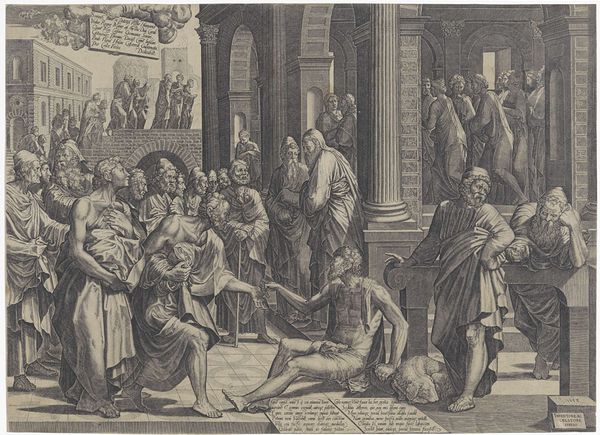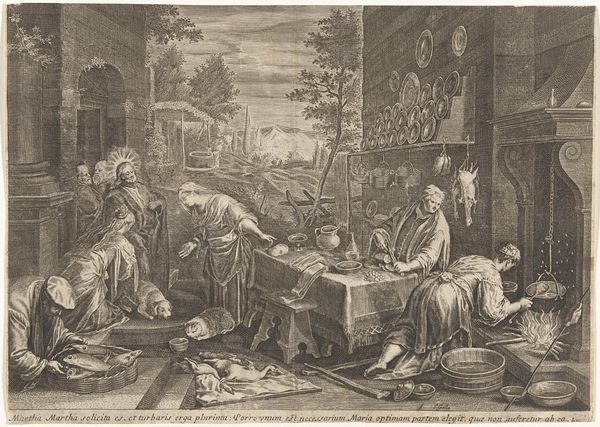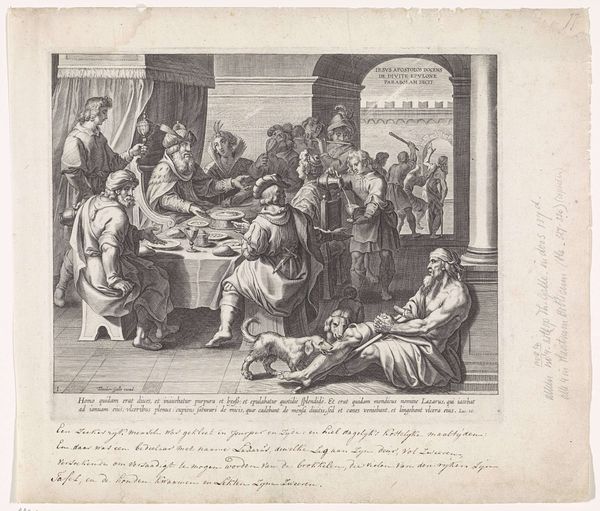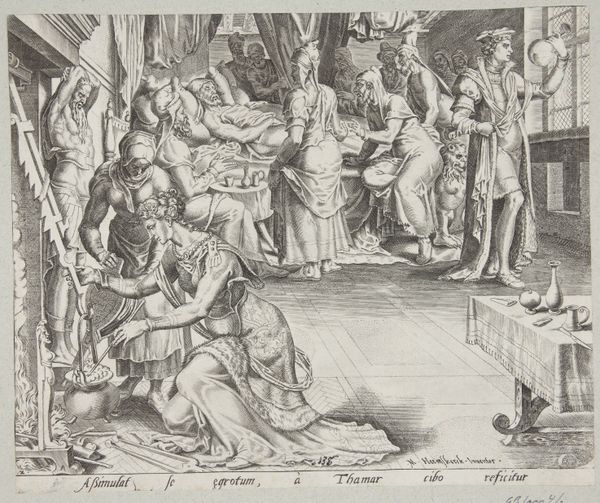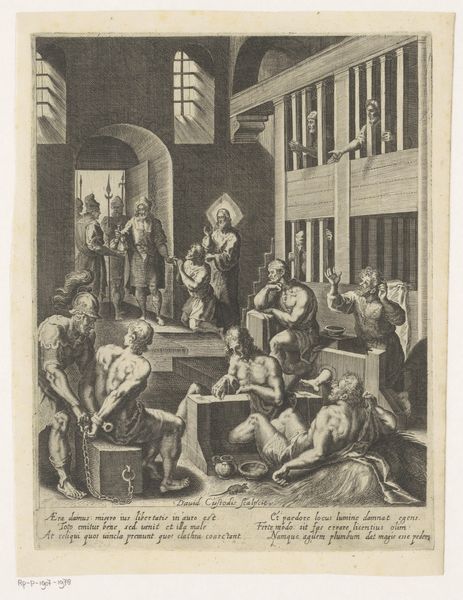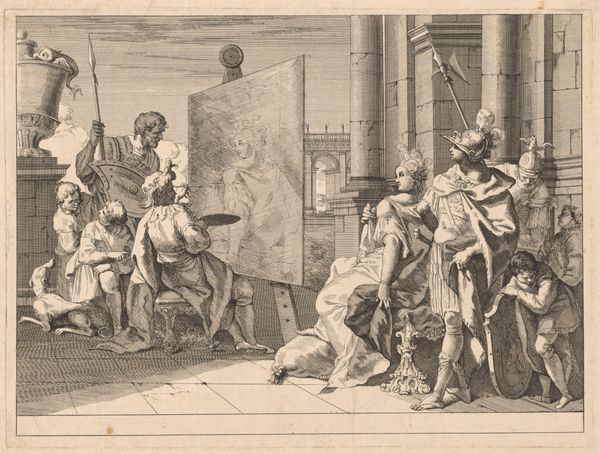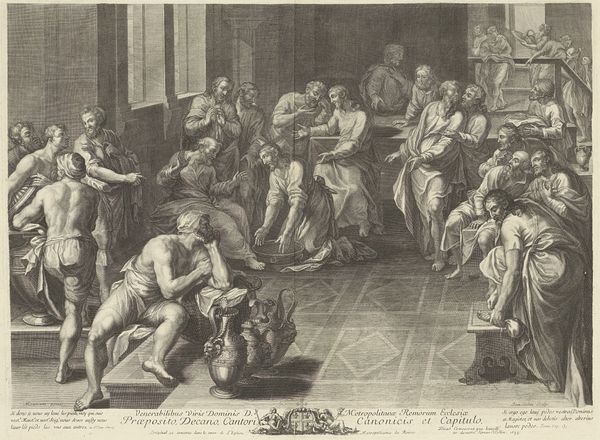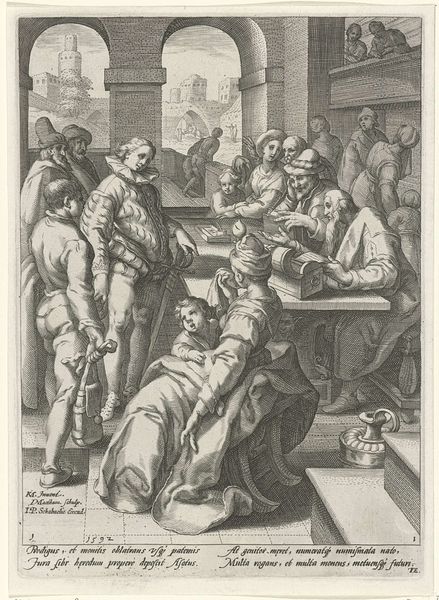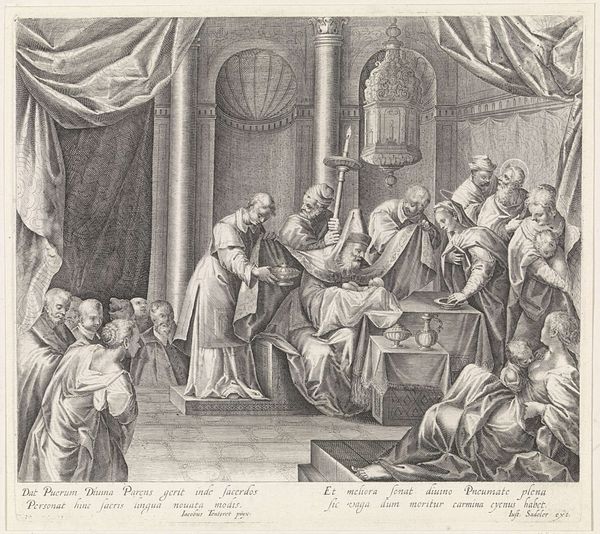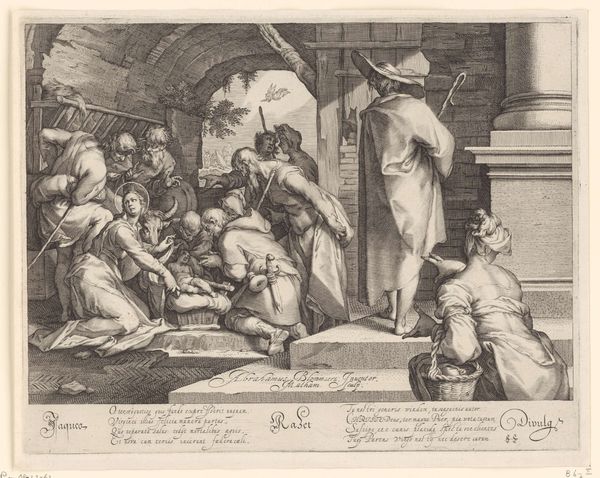
Dimensions: height 358 mm, width 457 mm
Copyright: Rijks Museum: Open Domain
This engraving, made by Johann Sadeler around 1600, depicts King David playing Psalm 118 on his harp. The image offers a glimpse into the intersection of religious narrative and societal values during the late Renaissance. Sadeler was working in a context of religious reform and conflict. The Protestant Reformation had challenged the authority of the Catholic Church, leading to new interpretations of biblical texts. Here, the depiction of King David, a figure revered in both Jewish and Christian traditions, offered a potent symbol of piety. The setting of the engraving within a richly decorated interior also provides a window into the cultural values of the time. The display of wealth and refinement reflects the patronage system, in which artists relied on wealthy elites for support. To fully understand the cultural significance of this engraving, we might consult historical documents, religious texts, and art market records. These resources can shed light on the complex social dynamics that shaped the production and reception of art during this period.
Comments
No comments
Be the first to comment and join the conversation on the ultimate creative platform.
